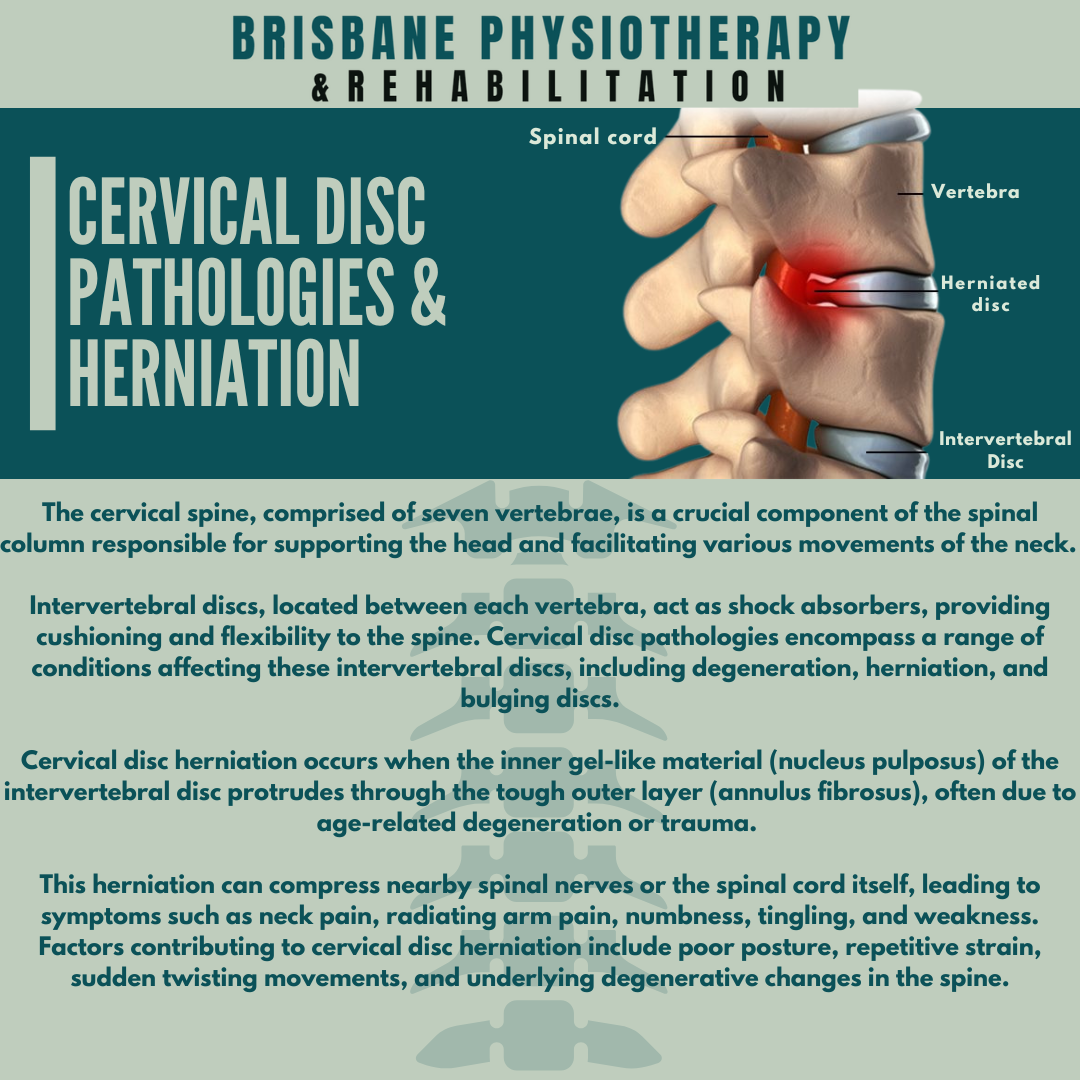Cervical Disc Pathologies and Herniations
Introduction:
Cervical disc pathologies and herniation are common sources of neck pain and discomfort, affecting individuals of all ages and lifestyles. In the realm of physiotherapy, understanding the mechanisms behind these conditions and employing effective management strategies is crucial for promoting recovery and restoring quality of life.
Understanding Cervical Disc Pathologies:
The cervical spine, comprised of seven vertebrae, is a crucial component of the spinal column responsible for supporting the head and facilitating various movements of the neck. Intervertebral discs, located between each vertebra, act as shock absorbers, providing cushioning and flexibility to the spine. Cervical disc pathologies encompass a range of conditions affecting these intervertebral discs, including degeneration, herniation, and bulging discs.
Mechanisms of Cervical Disc Herniation:
Cervical disc herniation occurs when the inner gel-like material (nucleus pulposus) of the intervertebral disc protrudes through the tough outer layer (annulus fibrosus), often due to age-related degeneration or trauma. This herniation can compress nearby spinal nerves or the spinal cord itself, leading to symptoms such as neck pain, radiating arm pain, numbness, tingling, and weakness. Factors contributing to cervical disc herniation include poor posture, repetitive strain, sudden twisting movements, and underlying degenerative changes in the spine.
Physiotherapy Management Strategies:
1. Pain Management: Physiotherapy interventions aim to alleviate pain and discomfort associated with cervical disc herniation through activity modification and pain relieving movements such as nerve sliders.
2. Manual Therapy: Skilled hands-on techniques, including joint mobilisation and soft tissue massage, can help improve cervical spine mobility, reduce stiffness, and alleviate muscle tension. Manual therapy techniques are tailored to the individual's specific needs and may include gentle traction to alleviate pressure on compressed nerves.
3. Exercise Rehabilitation: A tailored exercise program is essential for strengthening the muscles supporting the cervical spine, improving posture, and enhancing overall stability and mobility. Exercises may include neck stretches, cervical stabilisation exercises, and upper extremity strengthening exercises to address muscular imbalances and promote optimal function.
4. Postural Education: Physiotherapists provide guidance on maintaining proper posture during daily activities, work tasks, and recreational pursuits. Ergonomic assessments may be conducted to identify and address factors contributing to poor posture and spinal stress.
5. Education and Self-Management: Empowering patients with knowledge about their condition and self-management strategies is crucial for long-term recovery. Physiotherapists educate patients on ergonomic principles, body mechanics, activity modification, and strategies for preventing future recurrences of cervical disc herniation.
Conclusion:
Cervical disc pathologies and herniation can significantly impact an individual's quality of life, causing pain, discomfort, and functional limitations. However, with comprehensive physiotherapy intervention, individuals can experience significant improvements in symptoms and functional outcomes. By addressing pain, improving mobility, strengthening muscles, and promoting proper posture, physiotherapists play a vital role in managing cervical disc herniation and facilitating the journey towards recovery and optimal spinal health. If you're experiencing neck pain or symptoms suggestive of cervical disc pathology, consult with one of our qualified physiotherapists at Brisbane Physiotherapy and Rehabilitation to explore personalised treatment options for you.
